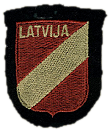35
VII
CONCLUSION
The focal point of the government's, charge is whether Vilis Hazners persecuted Jews in Riga between July and December, 1941. The review of the government's case and the respondent's defense leaves no doubt that the charge of persecution has been proven with the requisite "clear, convincing and unequivocal evidence." 44/
Mindful of its heavy burden of proof, the government has relied in this analysis only upon testimony 1which has been corroborated by one or more witnesses. The 2consistency of the experiences related by Mendelkorn, Wulfowitz and Dolgizer regarding their experiences at the Prefecture removes any question about their presence there. Likewise, the identification of the respondent both in court and from photo arrays 3firmly establishes Hazners' presence at the Prefecture and his role in persecuting those who were brought there.
Two witnesses testified about the incident at the ghetto gate; one of them, Wagenheim, saw the respondent as many as twelve times. This witness identified both pictures of Hazners, 4including a visa photo which he would have had no opportunity to view before picking it from the array. Wagenheim's description of the scene at the ghetto entrance is corroborated by Lowenstein's testimony 5and by the German policy, described in Nurnberg, of ruthlessly exploiting the resources of the eastern occupied territories.
| 44/ | 8 C.F.R. 242.14 |
Examination
"One..." witness is not "corroboration" of anything. This was most painfully obvious in Mendelkorn's factually impossible testimony regarding (the actual) Hāzners's whereabouts. That Mendelkorn possessed the entire Soviet propagandist output featuring Hāzners suggests he may have taken upon himself to put a known war criminal away.
There is no reason to doubt the stories of suffering told by the Nazi's victims. However, they have no bearing on Hāzners.
Again, the "Mendelkorn Certainty" in the face of factual impossibility and the worthlessness of "in court" identification (one witness had the sense to decline to participate) precludes the possibility that a handful of photographic "identifications" resulting from culling through hundreds of witnesses conclusively proves identity and therefore guilt.
If the array was nearly all photographs of Hāzners except two others of a single individual, his visa photograph was likely to look like at least one other. Lack of prior viewing does not apply when a series of other pictures already have been viewed. Moreover, it is virtually impossible the INS's witnesses had never seen Hāzners's picture in the Soviet Latvia media over the course of the prior fifteen-plus years—that is, those that didn't themselves possess the KGB propaganda publications.
The Nazi's intent regarding Eastern Europeans no bearing on the Hāzners case. This is simply more heaping of Nazi plots and sins on Hāzners.
